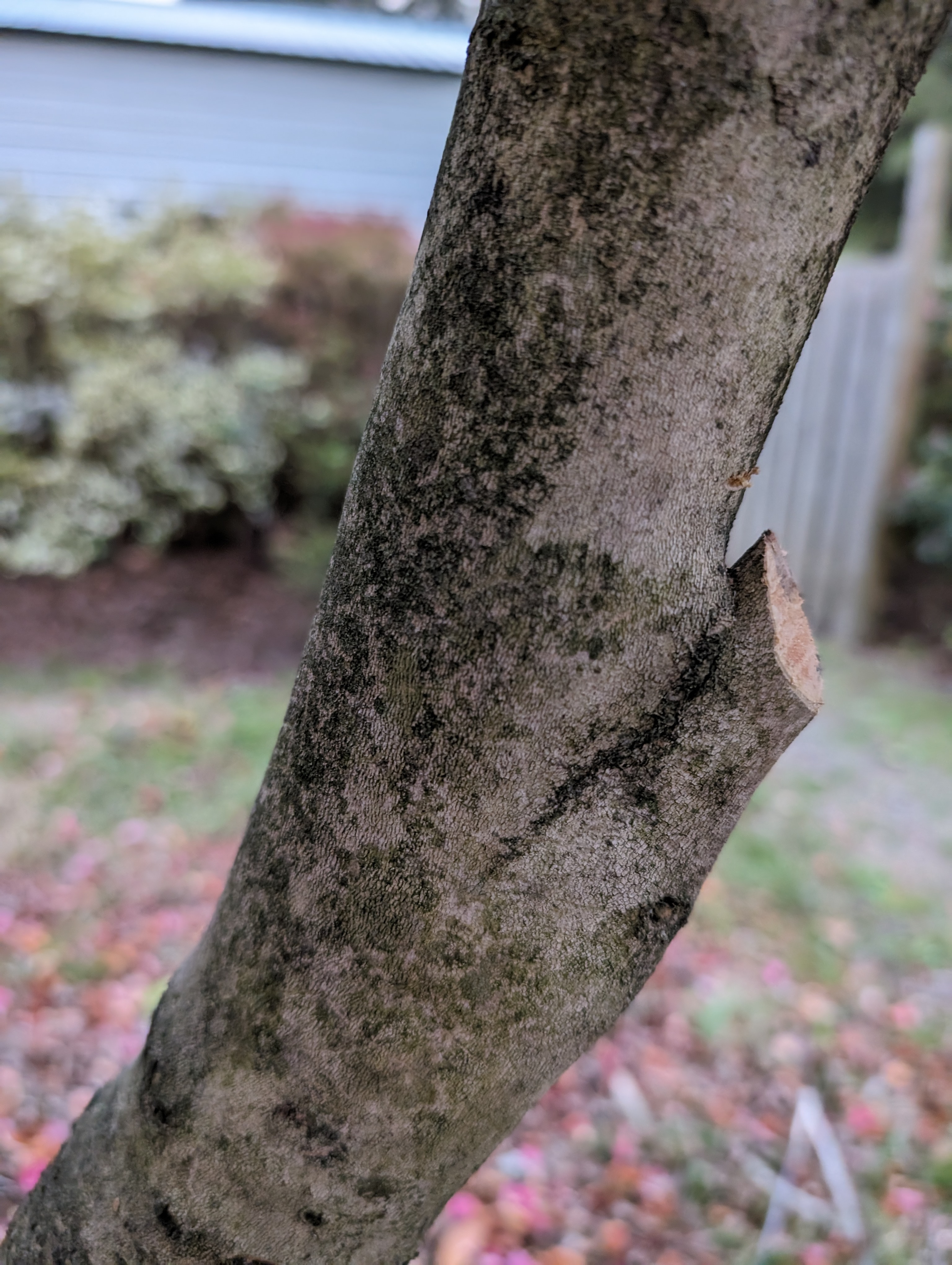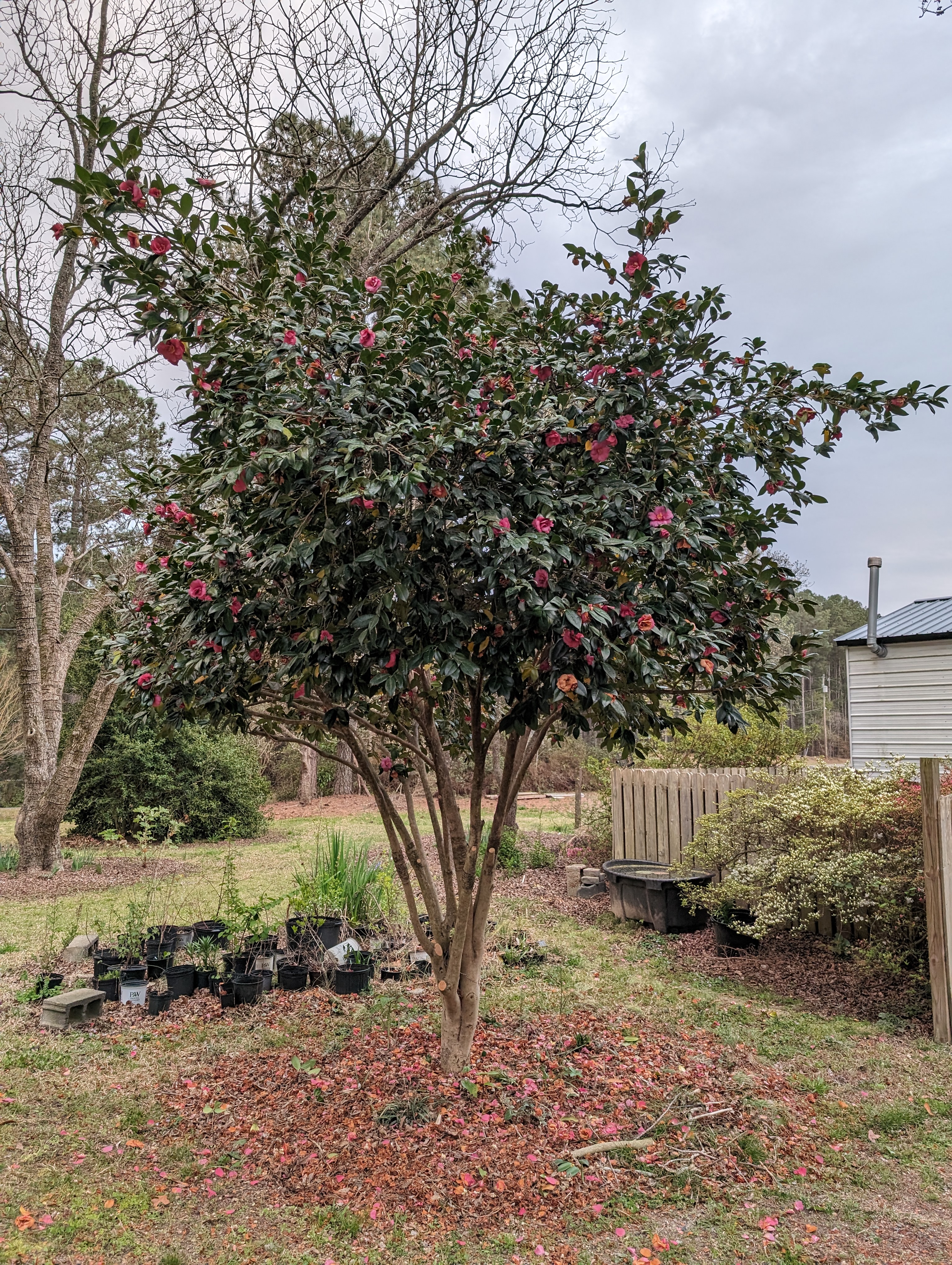Best Timing: Pruning Camellias After Flowering
go.ncsu.edu/readext?998859
en Español / em Português
El inglés es el idioma de control de esta página. En la medida en que haya algún conflicto entre la traducción al inglés y la traducción, el inglés prevalece.
Al hacer clic en el enlace de traducción se activa un servicio de traducción gratuito para convertir la página al español. Al igual que con cualquier traducción por Internet, la conversión no es sensible al contexto y puede que no traduzca el texto en su significado original. NC State Extension no garantiza la exactitud del texto traducido. Por favor, tenga en cuenta que algunas aplicaciones y/o servicios pueden no funcionar como se espera cuando se traducen.
Português
Inglês é o idioma de controle desta página. Na medida que haja algum conflito entre o texto original em Inglês e a tradução, o Inglês prevalece.
Ao clicar no link de tradução, um serviço gratuito de tradução será ativado para converter a página para o Português. Como em qualquer tradução pela internet, a conversão não é sensivel ao contexto e pode não ocorrer a tradução para o significado orginal. O serviço de Extensão da Carolina do Norte (NC State Extension) não garante a exatidão do texto traduzido. Por favor, observe que algumas funções ou serviços podem não funcionar como esperado após a tradução.
English
English is the controlling language of this page. To the extent there is any conflict between the English text and the translation, English controls.
Clicking on the translation link activates a free translation service to convert the page to Spanish. As with any Internet translation, the conversion is not context-sensitive and may not translate the text to its original meaning. NC State Extension does not guarantee the accuracy of the translated text. Please note that some applications and/or services may not function as expected when translated.
Collapse ▲Camellias have given us a good show here in Lee County this fall and winter. Our consistently cool (but not brutally frosty) winter has helped reduce plant stress and slowed our bloom time down to a pace where we can appreciate each rose-like bloom. Camellias are an excellent slow-growing alternative to some of our weedier, more aggressive (sometimes invasive!) hedge plants, but they sometimes also need a bit of a trim to keep in line. Here are some Camellia pruning tips to keep your shrubs looking tidy.
Why Prune
Modern gardeners range between trimmer-happy and willfully neglectful when it  comes to pruning their trees and shrubs. Most plants require some level of pruning maintenance to maintain a pleasing shape in the managed landscape. Camellias are one of those groups of landscape plants that naturally have a pleasing shape to our Western gardening eye; ranging from rounded shrubs to upright, arching small trees with little to no maintenance. They respond well to shearing (as long as it is at the right time), if you like the green meatball look. It is also okay to just come through and remove the errant crossing branch in the inner canopy, or wonky branch that is growing off to one side disrupting the symmetry of your plant.
comes to pruning their trees and shrubs. Most plants require some level of pruning maintenance to maintain a pleasing shape in the managed landscape. Camellias are one of those groups of landscape plants that naturally have a pleasing shape to our Western gardening eye; ranging from rounded shrubs to upright, arching small trees with little to no maintenance. They respond well to shearing (as long as it is at the right time), if you like the green meatball look. It is also okay to just come through and remove the errant crossing branch in the inner canopy, or wonky branch that is growing off to one side disrupting the symmetry of your plant.
Timing
It makes me happy when folks call the Extension Office, just to check they are pruning their plants at the right time. It is heartbreaking when folks tell me about how their healthy Camellia never flowers, when it turns out they are pruning the flower buds off themselves! It is critical to time your pruning cuts (except in the case of dead, diseased or dying branches, which you can remove anytime!) when you are managing a flowering tree or shrub, so you don’t cut the flowers off!
Camellia japonica, the winter-blooming Camellias, put out a fresh flush of growth right after they are done flowering; while Camellia sasanqua, the fall-flowering Camellias, wait until April to flush out new growth. Some plants are fast-growing and some are slow-growing; some only flush out once a year and some can put out multiple flushes. Waiting until April and May to do heavy pruning cuts on your Camellias can time it such that the new flush of growth comes out from the new cuts and you are less likely to remove hard-to-see flower buds that are forming.
Your last chance should be June for pruning Camellias that you are maintaining a natural look with. If you shear your Camellias, some folks have had luck with shearing the second flush of growth off as late as July, just to restore the rounded look to the Camellia. Make sure not to cut too close to the inner layer of growth when shearing late in the summer, as you will remove flower buds.
shearing the second flush of growth off as late as July, just to restore the rounded look to the Camellia. Make sure not to cut too close to the inner layer of growth when shearing late in the summer, as you will remove flower buds.
Other Maintenance
Pruning is not the only maintenance Camellias need! Always make sure you are mulching your plants and fertilizing them as the buds are starting to swell. Perform a soil test in the later summer and use the results to apply the right kind of fertilizer your plants need to thrive.
Winter is usually when folks are drawn to Camellias at the nursery, because it is hard to deny those gorgeous blossoms glowing from the otherwise winter doldrum colors. It is better to wait until March or April to plant your purchased Camellias, as they are prone to winter damage and winter drying if disturbed in the winter.
Camellias are easy to grow and come in a variety of colors and shapes for any garden. They are a better choice for folks looking for an evergreen shrub for privacy and hedging than some other shrubs on the market because of their steady, but modest growth habit and superior flower show. If you do not have one of these in your landscape, this could be the year to add one, knowing you don’t have to work that hard to maintain it!
Amanda Bratcher is the Horticulture Agent for North Carolina Cooperative in Lee County.




